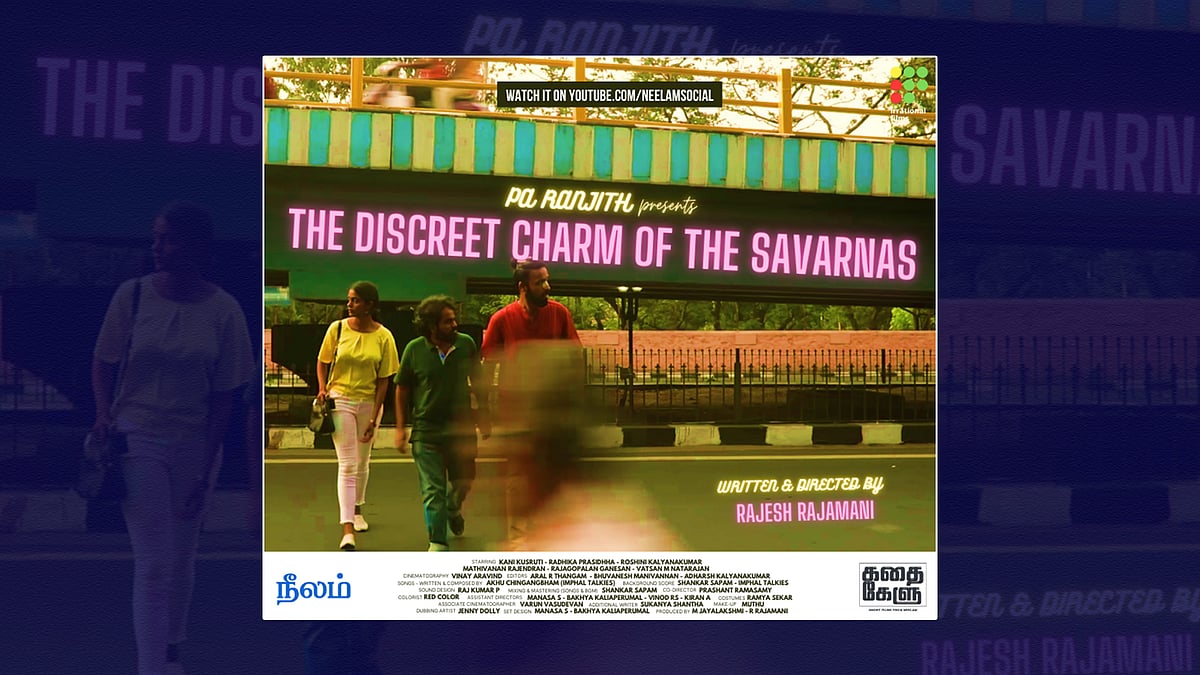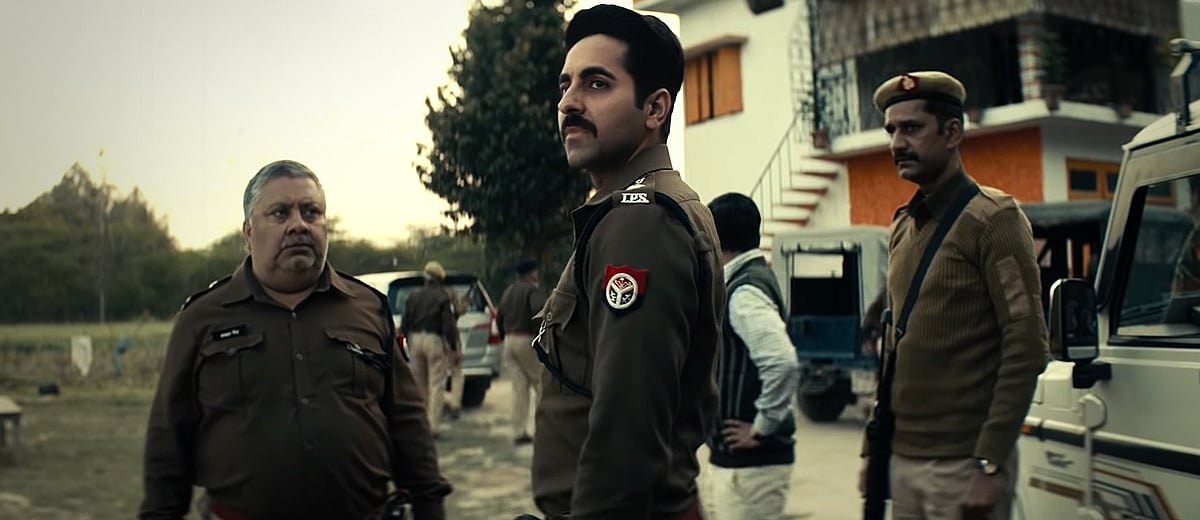Mari Selvaraj’s Karnan and Tamil cinema’s tryst with caste
Where the 1990s saw the valour of the ‘dominant’ caste, cinema of the 2000s saw the re-emergence of anti-caste discourse.
The Tamil film industry has been one of the most culturally and politically significant constituents of the state’s ethos. It has been used, to great success, by astute politicians as a means to disseminate ideas and politicise people, who later went on to hold the highest political offices, such as CN Annadurai, M Karunanidhi and MG Ramachandran.
After a phase of movies around themes of devotion and the freedom struggle, both of which had an upper caste gaze, Tamil cinema since the 1950s has been used alongside conventional campaign methods like public rallies and speeches to problematise the grievances of the marginalised.
Unlike many other film industries in India, Tamil cinema does not have a clear split in its audience. There are no separate “art” films and “mainstream” films. Every genre, every topic of film is part of the mainstream. Films based on rural settings are consumed with equal enthusiasm in urban centres as much as they are in rural centres, and vice versa. Actors and filmmakers from all sociopolitical and economic backgrounds have had a history of taking up films based on caste narratives, rural issues, and films highlighting the failure or excesses of the state, while each of them had a different gaze.
The evolving portrayal of caste
While films from the 1950s to the late ‘80s had broad themes of social equality, political developments and differential socioeconomic mobility complicated the social realities of various caste groups in the state.
In his book The Dravidian Years, Dr S Narayan argued that the substitution of the karnam or the village headman, an ascriptive and hereditary position with a village officer post recruited through the Tamil Nadu Public Service Commission by following affirmative action, had incrementally unsettled rural social relations. Scholars Kalaiyarasan and Vijayabaskar noted that a series of welfare policies have enabled mobility among Dalits and backward castes. The discourse of anti-caste politics and social justice seemed to contain any sociocultural excesses by backward caste groups on their proximate backward and/or Dalit castes. However, by the late ‘80s and ‘90s, the mobility achieved by sections of Dalits unsettled the backward castes.
On the front of political mobilisation, the southern and western regions had active and alternative political mobilisations by the Congress, the Left, and also parties like the All India Forward Bloc that had a political repertoire which was different from the Dravidian parties. The firm electoral expansion of the Dravidian bloc by the AIADMK (followed by the DMK) in the southern and the western regions in the 1970s was on the plank of paternalistic populism, which primarily foregrounds welfare over empowerment, thereby limiting space for manoeuvring social relations.
In the 1990s, Tamil Nadu was marked by caste violence, among other things, due to the governments’ policy of naming districts and bus corporations after famous leaders, few of whom were perceived as caste icons. Further, the decade also saw police excesses. Simultaneously, the state saw the emergence of a cinema rooted in nativism, which openly celebrated and valorised caste identities and characters. A period emerged with what has been called the Madurai formula or the 3Ms: murder, mayhem and Madurai.
Given the enfeebling public sphere – thanks to the anti-caste movement – that was wary of caste violence being celebrated on screen, the movies stuck to self-praise and internal contradictions rather than explicit inter-caste antagonisms which featured as innuendos or allegories.
The most prominent of these was Kamal Haasan’s epoch-creating Thevar Magan (1992) which had multiple references to the valorisation of caste, and other popular films include Chinna Gounder (1992) starring Vijayakanth, Yajaman (1993) starring Rajnikanth and Nattamai (1994) starring Sarath Kumar. The trend started at the turn of the 1990s. All these movies featured meek women and revolved around aspects of chastity and honour stemming from hierarchical pride. More importantly, the general public shown in the films held no agency.
While there is no kshatriya (ruling class) equivalent caste group in the state, many castes harboured the aspiration to imagine themselves as kshatriyas. Such movies were arguably rooted in abstract glorious imaginations. However, caste pride was both reflected and reinforced. In almost all these films, one of the most common triggers for conflict was when the valour and ritualistic sanctity of the “dominant” caste was questioned or challenged, often from within. Valour here was characterised primarily, or reductively, in terms of a male’s “masculinity”, his ability to protect his women or the honour of his caste.
From the mid-2000s, the film world, filled with movies rooted in caste pride, started to see the re-emergence of movies rooted in a subaltern, anti-caste and working class discourse. Directors like Vetrimaaran, Ram, Pa Ranjith, Mari Selvaraj, Ameer, Gopi Nainar and others sought to problematise and discuss social realities in an unapologetic manner. It is worth noting that political scientist Amit Ahuja’s research shows that Maharashtra and Tamil Nadu’s history of social movements have helped in mainstreaming the grievances of the Dalits. Examples include Madras, Kabali, Kaala, and Asuran.
As acclaimed writer Imayam wrote: “Usually in Tamil cinema, Dalits are portrayed as meek or arrogant people. Films often have sequences in which an intermediate caste protagonist helps the Dalits gain dignity or equality.” However, an important development in these movies was the protagonist being Dalit, and the celebration of the Dalit culture.
Karnan and subversion
After the success of his first movie Pariyerum Perumal (2018), Mari Selvaraj’s Karnan deftly mainstreams Dalit grievances in a relatable and compelling manner, furthering the politics of dignity and social justice as opposed to discriminatory caste pride and valorisation.
Karnan is set in a southern Tamil Nadu village and narrates the antagonism between the Devendra Kula Vellalars (former untouchables and referred to as Pallars) and the Thevars, the proximate backward caste masquerading as the ruling elite. The movie is replete with metaphors. It opens with Dhanush’s character Karnan sitting on an elephant as the camera pans over a headless bust, seemingly of Buddha.
While the elephant symbolises power and prosperity, the subsequent metaphors are poignant: a donkey with its front legs tied, a bus stop not being constructed for the village despite years of requests and complaints, a bus conductor saying that, according to him, the village that Karnan is from is not a settlement but a forest, the opening shot of Karnan’s sister dying in the middle of a highway with buses and cars passing by. All these represent the restrictions imposed on the community from achieving socioeconomic mobility and the apathy towards the community’s aspirations.
Instead of a caste leader or village head as the antagonist, Mari Selvaraj uses the police and the state as a relatable metaphor for caste dominance. The antagonist, Kannibiran, a senior police officer perceived to be belonging to the proximate backward caste, beats the village elders for not removing the headscarf donned by the chieftain or talaippakai – an act of subservience that is expected from the oppressed castes. In response, the protagonist Karnan ransacks the police station to rescue the village elders.
He then tells the villagers: “Nimirndhu paathadhukku adichaanga. Nimirndhu paathaachu, inimey kuniya mudiyaadhu.” They beat us for just asserting ourselves. Now that the assertion started, we won’t back down.
The movie subtly alludes to symbols representing the Dravida Munnetra Kazhagam, such as a rising sun on the wall of a hut being ransacked by the police, hinting at the importance of political pragmatism in finding allies in such fights – an approach that has been endorsed and adopted by tall anti-caste leaders like Thol Thirumavalavan of the Viduthalai Chiruthaigal Katchi.
Two characters and redefining an icon
Dhanush as Karnan is shown as an angry young man who does not shy away from assertion and confrontation. He eventually kills the antagonist to stop him from wreaking havoc on his village.
Alongside him is an important supporting character: a pragmatic pacifist Yeama Raja, played by Lal Paul, who foregrounds mobility and access to opportunities over confrontation. Unlike Karnan, Yeama chooses to immolate himself to prevent police violence.
Parallelly, a faceless wall painting alluding to Immanuvel Sekaran, a celebrated icon of the Devendra Kula Vellalars, is shown throughout the movie. Immanuvel was a freedom fighter, a leader of the Depressed Castes Youth League, and a member of the British Indian Army. In 1957, he was assassinated by the Thevars during caste clashes.
On the face of it, Dhanush’s character graph resonates with the commonsensical imagination and projection of Immanuvel as a confrontational young leader. In fact, such a projection of Immanuvel is furthered by the caste leaders of the Devendra Kula Vellalars, who are increasingly identifying themselves with the Hindutva project that pivots around pride and ritual superiority. The Hindutva ideal is to place caste in an abstract and vacuous past, where members of different castes are manipulated to feel superior. This valorised projection of caste leaders is a tool to assert such superiority.
However, placing these lower castes within the realm of the abstract does not allow them to reconcile with their past, which was filled with caste-hierarchical suppression. Nor does it allow them to move ahead within a social justice framework.
Karnan ends with the wall painting carrying the face of Yeama as against Karnan. In other words, the director attempts to subvert the common projection of Immanuvel and radically redefines his identity as a symbol of dignity, self-respect and social justice. Such a redefinition denies the Hindutva appropriation any chance to valorise revered figures and make them weapons of divisive politics.
Lastly, Karnan takes a step away from the valorisation of the hero who, despite ultimately killing the antagonist, is shown displaying emotions of futility and tragedy towards his act. In other words, it is not about the conquest of the oppressed caste over the oppressor caste, but of a hope to be socioeconomically mobile and treated with dignity. Karnan is an important addition to the list of movies that both seek to mainstream the voices of the marginalised and simultaneously subvert the perpetuation of explicit and implicit caste dominance.
 The Discreet Charm of the Savarnas: Rajesh Rajamani shows an unflattering mirror to upper caste filmmakers
The Discreet Charm of the Savarnas: Rajesh Rajamani shows an unflattering mirror to upper caste filmmakers  The Savarna saviour complex isn’t the main problem with Article 15
The Savarna saviour complex isn’t the main problem with Article 15